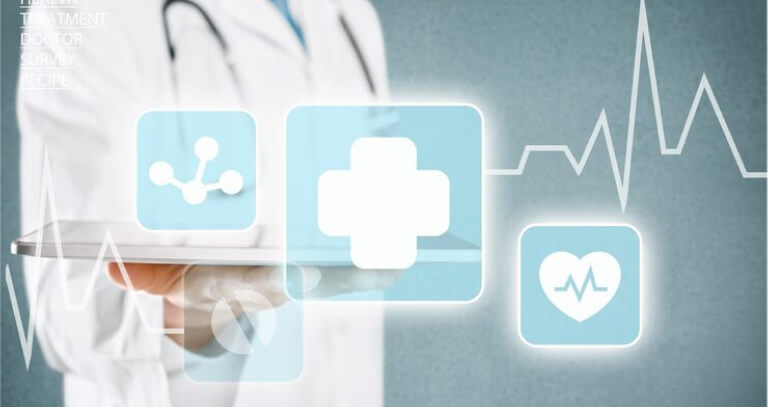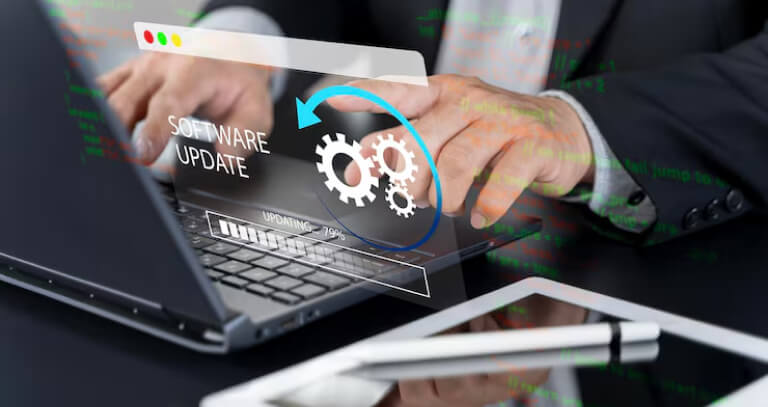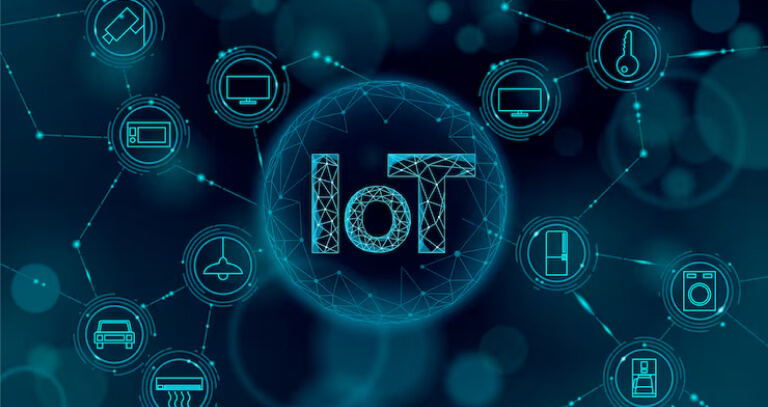Ultimate Guide for Legacy Application Modernization Services
Ditstek Blogs
In a world where technology is constantly evolving, many organizations struggle with the existing systems on which they have built their organization. Outdated legacy software directly restricts the ability to innovate and compete, providing obstacles to efficiency and growth.
Many organizations across various industries continue to use applications that are ten years old or older. It was a good idea a decade ago, but today it is burdensome to many parts of the business. Technology never stops, and legacy software systems do not age well.
Once an application is inflexible all around, the company goes where the application goes, slower workflows, missed opportunities, and out-of-control maintenance costs that silently impact the profits.
Modernizing these systems is a way to turn that challenge into an opportunity. However, it requires proper planning, technical expertise, and a genuine understanding of what you want your business to achieve to complete this task successfully.
This is where legacy application modernization services become critical. It supports business processes by keeping what still works, discarding what doesn't, and layering in faster, more innovative, and scalable components.
We are here to discuss possible modernization strategies, describe some best practices, and demonstrate how this transformation can align with key steps in your organization's journey.
Understanding Legacy Application Modernization
Every organization reaches that point when the software that keeps processes running along starts to feel sluggish. It functions well enough, but every update takes longer, every patch breaks something else, and every integration turns into a mini-crisis. That is when organizations realize that the software running their business has become an unexpected bottleneck.
Application modernizing isn't a "throw it all away" process. It is about taking the old and reshaping it for the world that exists in the organization now. You keep the base logic, retain the processes the organization's users are accustomed to -but rethink the underlying components.
Is Your Legacy System Holding You Back?
Your software once led your business; now it may be slowing it down. Discover how modernization transforms challenges into growth opportunities.
What Does It Mean For An Application To Be A Legacy?
Legacy does not just mean "old." It means systems that have aged to the point where they can no longer keep up. The poor manufacturing ERP is still built on antiquated systems. Or it could be the internally built CRM system from 2005 that refuses to engage with your new mobile app. Either way, both examples illustrate systems that age beyond usability.
- Depend on technology no longer supported by vendors.
- Require specialized skills that are becoming rare.
- Struggle to integrate with modern APIs and tools.
- Pose growing cybersecurity and compliance risks.
- Limit how quickly your business can evolve.
You see this everywhere, from finance and healthcare to legacy systems in logistics and transportation, where delayed data exchange can cause costly operational slowdowns.
Why Businesses Can't Afford to Ignore Modernization
There's a good reason for modernizing a business from legacy systems to their latest versions. If a company waits long enough to modernize, the foundation of its business will become weak and costly to maintain. Outdated digital systems accrue technical debt, the code lines that require constant maintenance but do not add any new value.
Not to mention the growing cost of inaction, the drag of an outdated system leads to a drop in efficiency, frustrated employees, unhappy customers, and missed growth opportunities. An app modernization tech stack, on the other hand, can help organizations transform their infrastructure into a platform of innovation that is scalable, secure, and ready for the next wave of technology.
Common Challenges with Legacy Systems

Ask any CEO what keeps them awake at night, and legacy software is near the top of that list. These systems were once reliable and efficient, but have gradually become bottlenecks, delaying deliveries and increasing their costs. Businesses keep these systems because they have "always worked." However, these familiar systems reveal complexity and numerous risks for the organization.
Technical Debt and Performance Limits
Over time, every workaround, temporary fix, or short-term solution compounds. Before long, those short-term solutions create a web of interdependent modules that no one really understands anymore. That's your technical debt affecting performance, making your applications slower and more challenging to scale.
Connectivity Roadblocks
Modern applications run on connectivity, but older applications do not. Legacy applications were not designed or engineered to communicate in real-time through APIs with cloud connectivity. In fact, integrating an older application with a contemporary solution, such as CRM systems, analytics, payment processors, or other platforms, often proves to be a time-consuming and exhaustive process.
Compliance and Security Issues
Cyber threats continue to evolve, and outdated software becomes increasingly susceptible to vulnerabilities. Software and operating solutions running on unsupported frameworks or missing security updates are all easy flags to find when conducting audits for compliance with regulations. In the healthcare sector or finance-related industries, a compliance breach can result in immediate financial and reputational damage.
Costs of Maintenance
Legacy systems tend to create ongoing budget deficits without anyone realizing it. Constant patches and workarounds, high reseating licenses - in some cases upwards of $25,000 depending on the program, and simply finding developers with the knowledge and understanding of legacy systems always adds up. When components of older hardware, platforms, or infrastructure become obsolete, maintaining the older system becomes a significant financial black-hole.
Restricted Agility and Innovation
An inflexible architecture that feels antiquated can feel too large even to innovate. Teams are unable to quickly deploy features, test updates, or scale systems to support market demand. Being trapped with a slow system and unable to innovate in a world where organizations now use AI-driven decision-making frameworks and on-demand service models is a significant competitive disadvantage.
To summarize, legacy systems may have carried your organization this far, but they will not get your organization to the next level, and that is often the realization that initiates the first genuine conversation around app modernization services.
Ready to See What Modernization Can Unlock?
Don’t just upgrade — evolve. Our experts identify what to keep, what to improve, and how to scale faster.
Core Strategies for Legacy Application Modernization

Organizations take different paths toward modernization. Some carefully consider every incremental step, like how a business operates, with above-average caution. Others leap in and plan to rewrite the application, rebuild it, or move everything to the cloud. However, whatever the plan, the ultimate goal is to develop systems that can adapt as quickly as your business. This is the focus of legacy application modernization services: stability with innovation.
Modernization is not a project with a single answer but more like a suit tailored to fit. Start with the fit, accommodate where it isn't a fit, and/or when all else fails, design a whole new suit. The following approaches guide most modernization efforts.
Rehosting (Lift and Shift)
Rehosting is the process of moving an office building without any changes to the desks, chairs, or office furniture. The software will look the same, only it will be hosted in a new infrastructure that provides better scalability and flexibility, usually in a cloud-based environment. Rehosting saves you the money from infrastructure costs the fastest and with the least amount of risk, everything will still function better with no code changes.
Replatforming
Replatforming is the process of changing the underlying platform, while still keeping it recognizable, the example of this is moving an application from on-premise to cloud-native. You will not rewrite the application but will change and optimize for performance and have a few versions apply new features incrementally.
Refactoring
Refactoring is primarily about cleaning up, think about it as cleaning up your computer display to have a more simple slack or desktop display or even on a piece of paper. Developers will be working to rewrite sections of code to improve performance, maintainability, and scalability.
Rebuilding or Rewriting
When systems become too complex or unstable, rebuilding is the best route to opt for making the things better. You leave the business logic intact but are redesigning the software using modern frameworks and technologies.
Replacing (COTS or Custom Build)
Every once in a while, the best move companies can make is to start from scratch. There are many professionals who use ready-to-use commercial software, or contract with a custom software company to build a completely new system from the ground up.
Of course, these approaches are not mutually exclusive; there are plenty of businesses that take a bit of both, on a scale from simple to complex or depending on the goal of the system. As an example, a company in the mining industry may be mostly concerned with modernization of mining software, whereas a logistics company may be more concerned with data integrations and mobility. No approach is incorrect, though, as modernization touches on the mere fact of aligning the technology with the evolution of the business.
And a small but important footnote: At DITS, we utilize AI throughout our development and modernization process. From smart code reviews, predictive quality assurance, and bespoke customization, AI provides the opportunity to be precise and performant in each development step.
Technologies Powering Modernization

Behind a successful modernization project is a technology stack that's been purchased with careful consideration. In addition to "upgrading" the old code, modernization involves creating an adaptable, future-proof digital ecosystem, moving as fast as your business rationale allows. The technology you select determines if you are provided with a "stop-gap" solution or long-term modernization.
Cloud Migration and Serverless Architecture
The cloud enables scalability, flexibility, and improved cost control. Serverless architecture goes even further and eliminates the need to be concerned with servers, or hardware constraints.
Microservices and APIs
Decomposing monolithic systems into microservices enables your organizations to update with speed, and easily consume third-party services. Once a micro-services are created, they can be scaled accordingly to accommodate demand.
Containerization
Technologies such as Docker and Kubernetes will gracefully run any application in any environment, improving portability, testing scenarios, and deployment.
AI and Automation Tools
At DITS, we are using AI to support rapid software development, automate testing, and ensure coding standards are adhered to. Every application we modernize or create, will have an artificial intelligence component.
DevOps and CI/CD Pipelines
With deployment, monitoring, and updates automated - you can rely on the application(s) to be released to individuals for improvement or functionality with no downtime faced by older systems.
Could AI Streamline Your Modernization Journey?
AI-driven code refactoring and predictive QA reduce risk and time. See how DITS modernizes smarter, not just faster.
How to Choose the Right Modernization Approach

No two modernization journeys are identical. What works for one enterprise may not be suitable for another. The key lies in understanding your goals, system dependencies, and long-term business strategy.
Assess Business Objectives and ROI Goals
Start with clarity -why modernize? Is it scalability, performance, or cost efficiency? Knowing your objectives helps define your modernization roadmap.
Conduct a System Audit and Gap Analysis
Review system health, integrations, and hidden inefficiencies. A solid audit highlights what needs attention first.
Prioritize Applications for Modernization
Tackle mission-critical systems first. A phased approach ensures smoother transitions and minimal business disruption.
Select the Right Technology Stack
Match your stack with your business strategy -cloud-first, AI-driven, or API-centric -whatever best supports your scalability goals.
Partner with the Right Modernization Team
DITS combines deep technical experience with business understanding. Our team ensures modernization enhances performance while preserving what makes your software unique.
Business Benefits of Legacy Application Modernization

Modernization delivers results that go far beyond the IT department. It transforms how your organization functions, innovates, and competes.
Improved Scalability and Performance
Your systems become agile, flexible, and responsive to business demand.
Lower IT Costs
Reduced maintenance, fewer manual processes with workflow automation and smarter infrastructure mean significant savings.
Stronger Security and Compliance
Upgraded security frameworks protect data and simplify compliance across industries.
Better User Experience
Modern UIs create faster, cleaner, and more intuitive interactions for teams and customers.
Faster Time to Market
With app modernization, updates, and features rolling out faster, your business can stay competitive.
Long-Term Business Resilience
Future-ready systems adapt easily to market changes and emerging technologies, ensuring sustained growth.
Want Systems That Evolve With Your Business?
Modernization isn’t about replacing the old — it’s about building technology that scales with tomorrow’s demands.
Why Choose DITS for Legacy Application Modernization
Selecting the right partner can make a world of difference. DITS has nearly a decade of experience with software modernization projects in industries such as healthcare, retail, finance, and logistics.
Every solution is built to be specific to your business model and operational needs.
What makes us different is that we leverage AI to make enhancements to development, testing and quality code standards, thus creating solutions that perform over a longer period after deployment.
With a 97% client retention rate, transparent processes, and post-deployment support, DITS has earned its reputation as the company to trust for lasting modernization. We do not simply modernize software; we future-proof the digital ecosystems of organizations.
Conclusion
There eventually comes a crossroads in every business, to keep plugging away with familiar, or to move ahead with smarter. Legacy systems served you very well for a long time, but they were never built to meet today's speed, scale, and security.
Modernization is not just an upgrade; it's a growth strategy. With the right partner, it can be seamless, budget friendly, and strategic. At DITS, we assist companies to evolve with assurance, enabling them to build systems that evolve with them, as opposed to against them.
Modernization is not the death of your old system; it is the beginning of something much better.
FAQs
1. What is legacy application modernization, and why does my business need it?
It's the process of updating outdated software with modern frameworks and technologies. Businesses need it to cut costs, improve performance, and stay secure in a digital-first world.
2. How does modernization impact business operations?
It streamlines workflows, enhances efficiency, and allows real-time integrations that boost decision-making and agility.
3. What's the difference between modernization and rebuilding software from scratch?
Modernization keeps the business logic intact while upgrading technology. Rebuilding involves starting anew, depending on system age and complexity.
4. How long does it take to modernize a legacy system?
Timeframes will vary. Depending on the complexity, the smaller systems may require a few months while larger, enterprise level solutions may take over a year to implement.
5. What are the risks of not modernizing legacy software?
Legacy systems often create an environment for increased maintenance expenditures, risk of security, and integration inefficiency which ultimately creates a barrier to overall growth of business.
6. Why choose DITS for modernization?
DITS combines for experience, AI precision, and deep technical skills to deliver secure, scalable, and tailored modernization solutions to your goals.

Dinesh Thakur
21+ years of IT software development experience in different domains like Business Automation, Healthcare, Retail, Workflow automation, Transportation and logistics, Compliance, Risk Mitigation, POS, etc. Hands-on experience in dealing with overseas clients and providing them with an apt solution to their business needs.
Recent Posts
Get in touch











 Calgary | Edmonton | Vancouver | Toronto
Calgary | Edmonton | Vancouver | Toronto Marriott Downtown Hotel | Calgary
Marriott Downtown Hotel | Calgary